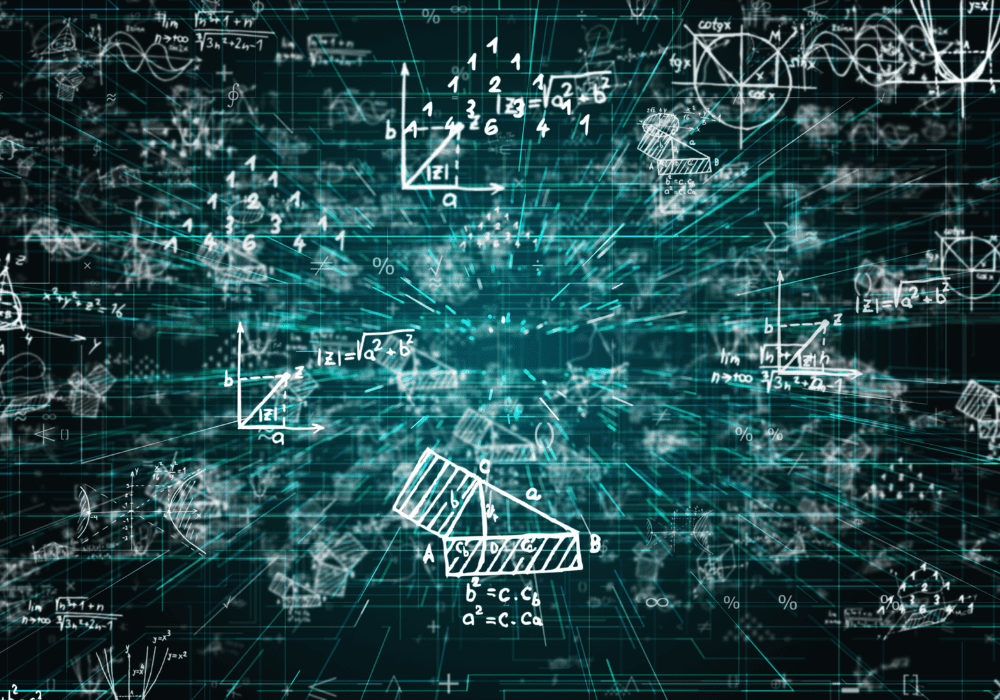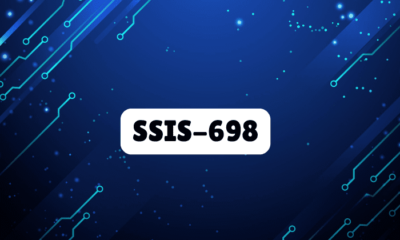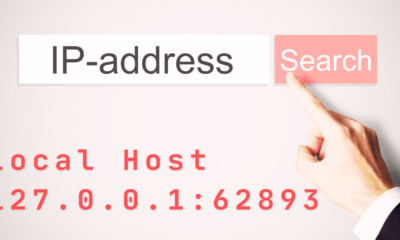Education
Why MBA Answer For Experienced Professionals-Notesmama – Discover Hints

In the ever-evolving landscape of global business, the Master of Business Administration (MBA) has emerged as a highly sought-after qualification. It’s not just for fresh graduates or young professionals; increasingly, experienced professionals are turning to the MBA as a means to elevate their careers, broaden their skill sets, and open doors to new opportunities. This article will explore the many reasons Why MBA Answer For Experienced Professionals-Notesmama.
Introduction
In today’s dynamic business environment, pursuing an MBA has become a strategic move for many experienced professionals looking to enhance their careers. The query why MBA answer for experienced professionals-notesmama encapsulates the essence of this decision, which goes beyond just acquiring a degree—it’s about positioning oneself for long-term success and leadership in the business world.
Whether you’re eyeing a promotion, aiming to switch industries, or simply want to sharpen your business acumen, an MBA offers a wealth of opportunities that can significantly impact your career trajectory. But what makes an MBA so appealing to seasoned professionals? This article delves deep into the reasons why pursuing an MBA, even after years of work experience, can be one of the most rewarding decisions you’ll ever make.
Why MBA answer for experienced professionals-notesmama
Career Advancement
One of the most compelling reasons Why MBA Answer For Experienced Professionals-Notesmama is the potential for career advancement. Many professionals find themselves hitting a ceiling in their current roles, where further progress seems limited without a significant credential like an MBA. This degree is often seen as a key differentiator in the competitive corporate world, where leadership roles require not just experience, but also advanced management skills and strategic thinking.
An MBA can propel professionals into senior management roles, C-suite positions, or even open doors to entrepreneurial ventures. For example, consider a mid-level manager with over a decade of experience in operations. While their experience is valuable, an MBA can provide them with the strategic insights, financial acumen, and leadership skills needed to move into a higher role such as Chief Operating Officer (COO).
Skill Enhancement
As professionals progress in their careers, the need for advanced skills becomes more apparent. An MBA curriculum is designed to equip students with a comprehensive understanding of various business functions—finance, marketing, operations, strategy, and human resources. For experienced professionals, this is an opportunity to refine and expand their skill sets, making them more versatile and effective leaders.
For instance, a professional with a background in engineering might have extensive technical skills but may lack knowledge in areas such as financial management or marketing strategy. An MBA can bridge these gaps, providing a holistic view of business operations and enabling professionals to make more informed decisions.
Additionally, the case study approach used in many MBA programs allows students to learn from real-world scenarios, applying theoretical knowledge to practical situations. This method of learning is particularly beneficial for experienced professionals who can relate these cases to their own experiences, leading to a deeper understanding of the material.
Networking Opportunities

Networking is another significant benefit of pursuing an MBA, particularly for experienced professionals. MBA programs attract a diverse group of individuals from various industries and backgrounds, creating a rich environment for networking. The connections made during an MBA program can be invaluable, providing access to a wide range of professionals, including peers, professors, alumni, and industry leaders.
These networks can open doors to new job opportunities, partnerships, and collaborations. For example, an MBA alumnus might connect with a fellow graduate who is now a senior executive in a company they’re interested in. This connection could lead to an opportunity that might not have been available through traditional job search methods.
Moreover, many MBA programs offer global networking opportunities through international residencies or study trips, allowing professionals to build connections beyond their local markets. This global perspective is increasingly important in today’s interconnected business world, where cross-border collaborations and international market expansions are common.
MBA vs. Other Qualifications for Experienced Professionals
MBA vs. Professional Certifications
For experienced professionals considering further education, the choice often comes down to an MBA versus professional certifications like Chartered Financial Analyst (CFA), Project Management Professional (PMP), or Certified Public Accountant (CPA). While these certifications are highly respected and provide deep expertise in specific areas, an MBA offers a broader perspective that is valuable for those aiming for leadership roles.
Professional certifications are ideal for professionals looking to deepen their knowledge in a particular field. For example, a financial analyst might pursue a CFA to gain advanced investment analysis skills. However, if this analyst aspires to move into a leadership role, where they need to understand not only finance but also marketing, operations, and strategy, an MBA would be more beneficial.
An MBA also offers flexibility in career options. While certifications tie professionals to specific fields, an MBA provides the versatility to transition into various industries or functions. This flexibility is particularly valuable for experienced professionals who may be looking to pivot their careers or take on broader responsibilities.
MBA vs. Master’s in Specialized Fields
Another consideration is whether to pursue an MBA or a master’s degree in a specialized field, such as a Master of Finance, Master of Marketing, or Master of Engineering Management. Specialized master’s programs offer in-depth knowledge in specific areas, making them ideal for professionals looking to become experts in a particular domain.
However, an MBA provides a more comprehensive education that covers all aspects of business management. This is crucial for experienced professionals who aspire to senior leadership roles, where they need to have a well-rounded understanding of the entire business operation.
For example, a professional with a background in marketing might consider a Master of Marketing to deepen their expertise. But if their goal is to move into a broader role like Chief Marketing Officer (CMO), where they need to oversee not just marketing but also budgeting, HR, and overall business strategy, an MBA would be a better fit.
Financial Considerations: Why MBA Answer For Experienced Professionals-Notesmama

Return on Investment (ROI)
Pursuing an MBA is a significant financial investment, and for experienced professionals, it’s crucial to consider the return on investment (ROI). The cost of an MBA can range from $50,000 to over $200,000 depending on the program and location. However, the potential increase in salary and career opportunities post-MBA often justifies the investment.
For experienced professionals, the ROI of an MBA is not just measured in terms of salary increase but also in terms of career advancement, job security, and the ability to transition into new roles or industries. Studies have shown that MBA graduates can see a salary increase of 50% or more within a few years of completing their degree. Additionally, the long-term benefits, such as greater job satisfaction and the ability to take on more challenging and rewarding roles, further enhance the ROI.
Funding Options
Financing an MBA can be a challenge, but there are several options available to experienced professionals. Many top MBA programs offer scholarships specifically for mid-career professionals. These scholarships can significantly reduce the financial burden and make the MBA more accessible.
Employer sponsorship is another option. Many companies are willing to sponsor their employees’ MBA education in exchange for a commitment to remain with the company for a certain period post-graduation. This can be a win-win situation, as the company benefits from the enhanced skills and knowledge of the employee, while the employee gains a valuable degree without bearing the full cost.
Loans are also available, and while taking on debt is a significant consideration, the potential salary increase post-MBA can make this a viable option. Additionally, many MBA graduates find that they are able to pay off their loans within a few years due to increased earnings.
Balancing Work and Study
For experienced professionals, balancing work and study is often one of the biggest challenges when pursuing an MBA. However, many MBA programs are designed with working professionals in mind. Executive MBA (EMBA) programs, for instance, are specifically tailored for those with significant work experience and typically offer classes on weekends or in intensive modules, allowing students to continue working while studying.
Online MBA programs are another option, providing the flexibility to study at your own pace and from any location. This can be particularly beneficial for professionals who travel frequently or have demanding work schedules.
Time management and support from family and employers are crucial for success in balancing work and study. It’s important to have a clear plan and to communicate with your employer about your commitments to ensure that you can manage both your job and your studies effectively.
Personal and Professional Growth through an MBA
Leadership Development
One of the key components of an MBA program is leadership development. MBA programs are designed to mold students into leaders who can manage teams, make strategic decisions, and drive organizational success. For experienced professionals, this is an opportunity to refine and enhance their leadership skills, preparing them for higher-level roles.
Many MBA programs include leadership training through workshops, simulations, and real-world projects. These experiences help students develop their leadership style and learn how to manage different types of teams and situations. For example, a project manager with years of experience might take on a leadership role in a student consulting project, learning how to manage a diverse team and navigate complex business challenges.
Personal Branding
An MBA can help professionals build a strong personal brand that sets them apart from their peers. This includes not only the knowledge and skills gained during the program but also the reputation and network associated with the MBA.
MBA programs often include courses on personal branding and career development, helping students to identify their unique strengths and how to market themselves effectively. For example, an MBA student might work on developing a personal brand that highlights their expertise in strategic management, their leadership experience, and their ability to drive business growth.
Additionally, the MBA alumni network can be a powerful tool for building and enhancing your personal brand. Alumni can provide valuable mentorship, advice, and introductions, helping you to establish your reputation in your chosen industry.
Increased Confidence and Strategic Thinking

One of the most profound impacts of an MBA is the increased confidence that comes from gaining a deeper understanding of business and developing strategic thinking skills. MBA programs challenge students to think critically, analyze complex problems, and develop innovative solutions. This process builds confidence and equips professionals with the skills needed to tackle the challenges of senior leadership roles.
For example, a marketing director might enter an MBA program with strong tactical skills but lack confidence in their ability to contribute to overall business strategy. Through the program, they gain a deeper understanding of areas such as finance and operations, allowing them to participate more effectively in strategic discussions and decision-making processes.
Common Misconceptions about Why MBA Answer For Experienced Professionals-Notesmama
“I’m Too Old for an MBA”
One common misconception is that there is an age limit for pursuing an MBA. The truth is, there is no such thing as being too old for an MBA. In fact, many MBA programs cater specifically to experienced professionals, offering executive and part-time programs that are designed for those with significant work experience.
The value of an MBA often increases with experience, as professionals are able to apply the knowledge gained in the program directly to their work. Moreover, the diversity of age and experience in an MBA program can enrich the learning experience, providing different perspectives and insights.
“MBA is Only for Career Changers”
While it’s true that an MBA is a popular choice for those looking to change careers, it’s also incredibly valuable for those looking to advance within their current industry. An MBA provides advanced skills and knowledge that can help professionals move into higher-level roles, take on more responsibility, and drive organizational success.
For example, a finance manager might use an MBA to gain the skills needed to move into a CFO role within their current company. Similarly, a healthcare professional might pursue an MBA to transition into a hospital administration role, where they can have a broader impact on the organization.
“An MBA is Not Worth It at My Career Stage”
Another misconception is that an MBA is only valuable at certain career stages. In reality, the benefits of an MBA can be realized at any stage of a career, depending on the individual’s goals. For early-career professionals, an MBA can provide a strong foundation for future growth. For mid-career professionals, it can open doors to higher-level roles. And for late-career professionals, it can provide the skills and credentials needed to move into leadership positions or even start their own business.
Conclusion
Pursuing an MBA is a significant decision, particularly for experienced professionals who have already established themselves in their careers. However, as this article has shown, the benefits of an MBA can be substantial, offering career advancement, skill enhancement, and valuable networking opportunities. Whether you’re looking to move up in your current organization, switch industries, or start your own business, an MBA can provide the tools and credentials needed to achieve your goals.
The question why MBA answer for experienced professionals-notesmama underscores the importance of understanding the value of an MBA for seasoned professionals. With the right program and approach, an MBA can be a transformative experience that propels your career to new heights.
FAQs
Q: Is it worth pursuing an MBA if I already have over 10 years of experience?
A: Yes, pursuing an MBA after 10 years of experience can still be highly beneficial. It enhances your leadership skills, expands your professional network, and opens up higher-level career opportunities that might not be accessible without an advanced degree.
Q: How can I manage my job while pursuing an MBA?
A: Balancing work and an MBA is challenging but feasible with good time management. Many MBA programs offer part-time or executive options designed for working professionals, allowing you to continue your career while studying.
Q: Will an MBA increase my salary significantly?
A: While salary increases vary, many experienced professionals see a substantial salary boost post-MBA. The exact increase depends on the industry, role, and the individual’s previous experience, but the return on investment is generally positive.
Q: What are the networking benefits of an MBA for experienced professionals?
A: MBA programs offer extensive networking opportunities, connecting you with peers, alumni, and industry leaders.
Q: Can an MBA help me transition to a different industry?
A: Yes, an MBA is particularly useful for those looking to switch industries. The program provides a broad business education, equipping you with versatile skills that are applicable across various sectors, facilitating a smoother transition.
Education
Repair YEX382V3YTE Air Conditioner: Easy & Effective Troubleshooting Guide

When the summer heat kicks in, nothing is more frustrating than a malfunctioning air conditioner, especially one as specific as the YEX382V3YTE model. Whether you’re dealing with inconsistent cooling, odd noises, or complete breakdowns, knowing how to repair YEX382V3YTE air conditioner can save you time, money, and discomfort. In this guide, we’ll explore step-by-step solutions, troubleshooting techniques, maintenance tips, and more to help you get your air conditioning unit running smoothly again.
What is the YEX382V3YTE Air Conditioner?
The YEX382V3YTE is a mid-to-high-end air conditioning unit known for its energy efficiency, quiet operation, and powerful cooling. Often installed in residential and light commercial settings, this unit supports smart controls, programmable thermostats, and eco-friendly refrigerants.
Key Features
- High SEER rating for energy efficiency
- Smart temperature control via app or remote
- Dual inverter compressor technology
- HEPA filtration for improved air quality
- Auto-clean and self-diagnosis features
Understanding these features is crucial because some repairs can affect core systems like the compressor or control board.

Common Issues With YEX382V3YTE AC Units
Before attempting to repair YEX382V3YTE air conditioner, identify the symptoms. Here’s a list of common problems users report:
a. AC Not Cooling Properly
This could be due to:
- Dirty air filters
- Low refrigerant levels
- Faulty thermostat
b. Unit Doesn’t Turn On
Possible causes:
- Tripped circuit breaker
- Faulty power supply
- Blown capacitor
c. Strange Noises
Clicking, buzzing, or grinding sounds may result from:
- Loose parts
- Debris in the fan
- Worn-out bearings
d. Water Leaks
Water pooling around the unit could mean:
- Clogged drain line
- Broken condensate pump
- Iced-up evaporator coils
e. Error Codes Displayed
The YEX382V3YTE AC displays self-diagnostic error codes. Each code points to a specific fault such as compressor failure, fan motor malfunction, or sensor issues.
Tools Needed to Repair YEX382V3YTE Air Conditioner
Proper tools ensure safe and effective repairs. Here’s a checklist:
- Screwdrivers (Phillips and flathead)
- Multimeter (for electrical testing)
- HVAC manifold gauge set
- Fin comb
- Refrigerant leak detector
- Vacuum pump and refrigerant scale
- Insulated gloves
- Safety goggles
Having these on hand prepares you for almost any internal or external issue.

Step-by-Step Troubleshooting Guide
Before jumping into repairs, check out this troubleshooting checklist to help fix your Repair YEX382V3YTE Air Conditioner.
Step 1: Inspect Power Supply
Check the circuit breaker and wall outlet. Reset the breaker and ensure there’s voltage using a multimeter.
Step 2: Clean or Replace the Air Filter
Dirty filters block airflow, making the system inefficient. Clean reusable filters monthly or replace them every 2–3 months.
Step 3: Check Thermostat Settings
The thermostat should be set to “Cool.” The temperature should be lower than room temperature. If necessary, change the batteries.
Step 4: Examine Outdoor Condenser Unit
Inspect for:
- Debris blocking airflow
- Bent fins (use a fin comb to straighten)
- Fan obstruction
Step 5: Look for Ice on Evaporator Coils
If iced up, turn off the unit and let it thaw. Then check refrigerant levels and airflow.
How to Repair YEX382V3YTE Air Conditioner Components
a. Repairing the Fan Motor
Symptoms: Fan not spinning or humming
Fix:
- Turn off the power.
- Remove the top panel of the condenser unit.
- Test the motor with a multimeter.
- Replace if readings are inconsistent.
b. Fixing a Faulty Capacitor
Symptoms: Clicking sounds, fan not starting
Fix:
- Discharge the capacitor using a resistor.
- Replace with the exact voltage and microfarad rating.
c. Replacing the Thermistor Sensor
Symptoms: Inaccurate room temp readings
Fix:
- Remove access panel.
- Unplug the sensor and replace it.
- Recalibrate the thermostat if necessary.
d. Dealing With Refrigerant Leaks
Symptoms: Warm air, iced coils
Fix:
- Use a leak detector to locate leak.
- Patch with HVAC sealant or replace the damaged component.
- Recharge refrigerant using a gauge manifold set.
e. Unclogging the Drain Line
Symptoms: Water leak or shutdowns
Fix:
- Use a wet/dry vacuum on the exterior condensate pipe.
- Flush with vinegar or bleach solution.
Preventive Maintenance Tips
Regularly maintenance increases your device’s lifespan and reduces the possibility of problems down the road.
Monthly Tasks
- Clean or replace air filters
- Wipe down indoor vents
- Clear debris from around the condenser unit
Quarterly Tasks
- Inspect refrigerant lines
- Clean evaporator and condenser coils
- Test thermostat accuracy
Annual Tasks
- Schedule professional HVAC inspection
- Flush the condensate drain
- Tighten all electrical connections
When to Call a Professional Technician
While many YEX382V3YTE air conditioner repair tasks are DIY-friendly, some situations require certified HVAC experts:
- Compressor replacement
- Refrigerant recovery and recharging
- Electrical short circuits
- Persistent error codes despite resets
Choosing the Right Technician
- Look for NATE certification
- Read Google or Yelp reviews
- Get quotes from at least 3 providers
- Ask about warranties and insurance
Replacement vs. Repair: What’s Better?
When to Repair
- The unit is under 8 years old
- The issue is isolated (like a capacitor or fan)
- Repair costs <30% of the AC’s original price
When to Replace
- Repair costs exceed 50% of original value
- Frequent breakdowns
- Unit is over 12 years old
- Poor energy efficiency
Environmental Consideration
Newer models use eco-friendly refrigerants like R-410A or R-32, which are better for the environment and more efficient.
Conclusion
Repairing your YEX382V3YTE air conditioner doesn’t have to be a daunting task. With a clear understanding of common issues, the right tools, and methodical troubleshooting, many problems can be fixed at home. Whether you’re replacing a faulty capacitor, cleaning the coils, or troubleshooting a sensor error, this guide equips you to handle it all confidently.
However, if the situation is beyond your expertise, don’t hesitate to contact a licensed technician. Whether you’re trying to repair YEX382V3YTE air conditioner or maintain another model, remember that proper maintenance not only reduces repair costs but also ensures long-term efficiency, better air quality, and lower energy bills.
FAQs
Q1: How long does a YEX382V3YTE AC unit typically last?
Answer: With regular maintenance, it can last 12–15 years.
Q2: Is the YEX382V3YTE model compatible with smart thermostats?
Answer: Yes, it supports most Wi-Fi-enabled smart thermostats and mobile apps.
Q3: How often should I top up refrigerant?
Answer: Ideally, never. Low refrigerant levels suggest a leak, which should be repaired before refilling.
Q4: Can I reset the YEX382V3YTE air conditioner?
Answer: Yes. Use the breaker to turn off the machine, then wait five minutes before restarting. A physical reset button on the control panel is another feature of some systems.
Q5: Are YEX382V3YTE replacement parts easily available?
Answer: Yes, most parts like filters, capacitors, sensors, and fan motors are available through authorized service centers or HVAC suppliers.
Related Article: 447200-4771: Understanding and Utilizing This Essential Component
Education
Analyzing Authors/Stories/Sustenance.txt – Discover Hints

Storytelling has always been a significant part of human culture, an essential medium through which values, lessons, and emotions are shared. Among the many genres and styles of narrative writing, some stories go beyond mere entertainment to touch on deeper philosophical and existential issues. In this context, Authors/Stories/Sustenance.txt emerges as a fascinating subject for literary analysis. While the exact origins of authors/stories/sustenance.txt remain somewhat ambiguous, this title piques curiosity and draws attention to a potentially thought-provoking story that explores themes of survival, nourishment (both literal and metaphorical), and the human condition.
This article aims to explore and analyze authors/stories/sustenance.txt, diving into its possible themes, narrative structure, characters, and its importance in the broader landscape of storytelling. Whether you’re a literary enthusiast, a student, or just someone intrigued by the title, this comprehensive examination will offer unique insights into what makes authors/stories/sustenance.txt a notable piece of writing.
Introduction to Authors/Stories/Sustenance.txt
The Authors/Stories/Sustenance.txt suggests a story with an underlying focus on sustenance, a concept that can be interpreted in a variety of ways. Whether referring to food, emotional nourishment, or the spiritual sustenance that gives life meaning, sustenance is a theme that offers fertile ground for narrative exploration. The use of “txt” in the title implies a digital format, suggesting that the story could be a piece of modern or postmodern literature designed to be shared in a text-based medium.
This introduction sets the stage for readers to explore the broader concepts of survival, nourishment, and existential longing—ideas that are likely central to authors/stories/sustenance.txt.
The Meaning Behind the Title: Authors/Stories/Sustenance.txt
The title authors/stories/sustenance.txt can be broken down into its components for a deeper understanding:
- Authors: This refers to the creator(s) of the story. It could indicate that the narrative delves into the creative process or highlights the significance of storytelling in the act of sustaining human culture.
- Stories: This emphasizes the importance of narrative in shaping human experiences. Stories are sustenance for the mind, feeding our imaginations and providing insight into life’s complexities.
- Sustenance: The core theme of the story. While it may initially refer to food or physical nourishment, sustenance can be understood in broader terms—intellectual, emotional, or spiritual.
- .txt: A file format commonly associated with plain text. The inclusion of “.txt” in the title suggests a minimalist or stripped-down approach to storytelling, possibly aiming for a raw and direct narrative experience.
Together, archive asstr authors/stories/sustenance.txt presents itself as more than just a tale—it’s a layered narrative that explores what it means to sustain oneself in different aspects of life.
Thematic Elements in Authors/Stories/Sustenance.txt

Themes are the lifeblood of any narrative, and authors/stories/sustenance.txt is no exception. Some of the key themes likely explored in this story include:
- Survival and Basic Needs: At its most basic level, sustenance refers to food and the basic needs required to keep living. The story might address issues of hunger, deprivation, or resourcefulness in the face of scarcity.
- Emotional and Psychological Sustenance: Beyond physical survival, humans need love, connection, and meaning. The narrative could explore how characters seek out emotional fulfillment or deal with its absence.
- The Creative Process: Given that the word “authors” is present in the title, there could be an element of meta-narrative, examining how storytelling itself is a form of sustenance for both creators and readers.
- Existential Reflection: Like many stories that focus on sustenance, authors/stories/sustenance.txt could delve into existential themes—questioning the purpose of life, the human need for connection, and how we find meaning in the struggle to survive.
Plot Summary of Authors/Stories/Sustenance.txt
Without access to the full text, we can only speculate on the exact plot of authors/stories/sustenance.txt, but drawing on common narrative techniques and themes related to sustenance, we can propose the following potential outline:
The story likely follows a central character or group of characters grappling with issues of survival—whether in a literal sense (struggling for food, water, or shelter) or in a metaphorical one (searching for purpose, love, or personal growth). The narrative might alternate between moments of scarcity and abundance, offering a commentary on the fragile balance between survival and fulfillment.
As the characters navigate their challenges, the story could incorporate flashbacks or reflections that provide deeper insight into what drives them. In the end, authors/stories/sustenance.txt may leave readers with an open-ended conclusion, prompting further reflection on what truly sustains us as human beings.
Character Analysis in Authors/Stories/Sustenance.txt
Characters in authors/stories/sustenance.txt likely serve as conduits for the larger themes of the narrative. Here are some potential archetypes or figures that may appear:
- The Survivor: This character embodies the theme of physical sustenance, navigating the harsh realities of survival. They may be a hunter, farmer, or even a scavenger, constantly searching for food or resources.
- The Seeker: A character driven by emotional or spiritual hunger. They are not satisfied with mere physical survival but are looking for deeper meaning in their relationships or existence.
- The Creator: Possibly a meta-character representing the “author” of the story, this figure might symbolize the idea that storytelling itself is a form of sustenance, both for the creator and the audience.
- The Observer: A peripheral character who witnesses the struggles of others and provides a philosophical commentary on the nature of sustenance, survival, and human resilience.
These characters would likely evolve as they face challenges related to their respective needs for sustenance, whether physical, emotional, or intellectual.
The Importance of Sustenance as a Theme
The theme of sustenance has been explored in literature across cultures and time periods. At its core, sustenance represents survival, but it also encompasses the broader human need for nourishment in all forms—emotional, intellectual, spiritual, and physical. In archive asstr authors/stories/sustenance.txt sustenance could symbolize the struggle to find balance between fulfilling these needs and the obstacles that impede them.
In a world where scarcity and abundance often coexist, the quest for sustenance may also reflect societal inequalities and environmental challenges, particularly in narratives set in dystopian or post-apocalyptic worlds.
Symbolism and Imagery in Authors/Stories/Sustenance.txt
Symbolism and imagery are likely central to the impact of authors/stories/sustenance.txt, given its thematic focus on sustenance. Some potential symbols and images that may appear in the narrative include:
- Food and Water: Literal sustenance, representing life and survival, but also symbolizing the human need for connection and support.
- Fire: Fire could symbolize warmth, comfort, and the energy needed to sustain life, as well as destruction and the fragility of existence.
- Journeys or Quests: Characters in authors/stories/sustenance.txt might embark on literal or metaphorical journeys to find sustenance, reflecting the broader human experience of seeking fulfillment.
- Nature: The environment—whether barren or lush—may serve as a backdrop to the narrative, representing the cycles of scarcity and abundance in both nature and human life.
Writing Style and Techniques in Authors/Stories/Sustenance.txt
The writing style of archive asstr authors/stories/sustenance.txt is likely to be concise and direct, especially given the “txt” file format in the title, which suggests a simple, text-based narrative. This minimalistic approach may mirror the themes of survival and scarcity, with the story relying on subtle imagery and understated dialogue to convey its message.
Some possible writing techniques used in authors/stories/sustenance.txt include:
- Stream of Consciousness: The story might employ a stream of consciousness style to reflect the internal struggles of the characters as they grapple with their needs for sustenance.
- Flashbacks: These could be used to provide insight into the characters’ past experiences with abundance or deprivation, offering a contrast to their current situation.
- Foreshadowing: The story may use foreshadowing to hint at future hardships or moments of fulfillment, keeping readers engaged in the characters’ journeys.
Comparison with Other Similar Works
There are numerous works in literature that explore the theme of sustenance in various forms. By comparing authors/stories/sustenance.txt with other stories, we can gain a better understanding of how it fits into a larger tradition of survival and existential narratives.
- “The Road” by Cormac McCarthy: Like authors/stories/sustenance.txt, McCarthy’s novel explores themes of survival in a post-apocalyptic world, where food and human connection are both scarce.
- “Life of Pi” by Yann Martel: This novel deals with survival at sea, but also with the psychological and spiritual sustenance required to endure extreme isolation.
- “The Grapes of Wrath” by John Steinbeck: Steinbeck’s portrayal of the Dust Bowl-era migrants’ quest for sustenance offers a social commentary on scarcity and inequality.
In each of these works, sustenance is not just about physical survival but also about the emotional and psychological resources required to persevere in the face of hardship.
Critical Reception and Interpretations of Authors/Stories/Sustenance.txt

Although authors/stories/sustenance.txt may not be as widely recognized as some of the literary giants mentioned above, its themes and narrative structure are likely subject to various interpretations. Some critics may view the story as a meditation on survival in both literal and metaphorical terms, while others may focus on the existential implications of the characters’ quest for sustenance.
The title itself invites speculation about the nature of storytelling as sustenance, suggesting that the act of creating and sharing stories is fundamental to human survival, just as much as food or water.
The Impact of Authors/Stories/Sustenance.txt on Readers
For readers, authors/stories/sustenance.txt could be a thought-provoking narrative that forces them to consider their own needs for sustenance—not just in terms of physical nourishment, but also in relation to their emotional and intellectual well-being. The story may resonate with those who have experienced deprivation, whether of material resources or of meaningful human connections.
By focusing on a universal theme like sustenance,archive asstr authors/stories/sustenance.txt has the potential to evoke a deep emotional response, prompting readers to reflect on their own lives and the sources of sustenance they rely on.
Philosophical Questions Raised in Authors/Stories/Sustenance.txt
One of the most compelling aspects of authors/stories/sustenance.txt is the philosophical questions it likely raises about human existence. Some of these questions might include:
- What truly sustains us as human beings? Is it just food and water, or do we need emotional and spiritual nourishment as well?
- What happens when our sources of sustenance are taken away? How do we adapt to scarcity, and what does this reveal about human nature?
- Is storytelling a form of sustenance? Can the act of sharing stories provide us with the psychological or emotional sustenance we need to survive?
These questions could make authors/stories/sustenance.txt a rich text for discussion in both academic and casual settings, as readers grapple with the deeper meanings behind the story.
Sustainability and Survival: Real-world Connections
The theme of sustenance in authors/stories/sustenance.txt is highly relevant in today’s world, where issues like climate change, food insecurity, and resource depletion are at the forefront of global concerns. The story may offer a fictional lens through which readers can reflect on these pressing issues, particularly how societies respond to scarcity and the unequal distribution of resources.
Additionally, the focus on emotional and psychological sustenance could resonate with modern readers who are navigating the challenges of mental health in an increasingly complex and demanding world.
How “Sustenance” Reflects Modern Society
In modern society, the concept of sustenance extends beyond mere survival. We live in a world where material abundance can exist alongside emotional deprivation, and archive asstr authors/stories/sustenance.txt may offer a critique of this imbalance. The story could explore how people in wealthy, developed nations often struggle to find meaning or connection, even when their physical needs are met.
Alternatively, authors/stories/sustenance.txt might shine a light on the inequalities that exist in access to sustenance, drawing parallels between the characters’ struggles and real-world issues like poverty, social isolation, and environmental degradation.
FAQs about Authors/Stories/Sustenance.txt
What is the central theme of authors/stories/sustenance.txt?
The central theme of authors/stories/sustenance.txt revolves around sustenance, encompassing not just physical nourishment but also emotional, intellectual, and spiritual support.
Who is the author of authors/stories/sustenance.txt?
The specific author of authors/stories/sustenance.txt is unknown or ambiguous, suggesting that the story may belong to a collective or open-source literary tradition.
How does authors/stories/sustenance.txt relate to survival narratives?
Authors/stories/sustenance.txt likely explores the theme of survival in various forms, from physical survival in the face of scarcity to the search for emotional or spiritual fulfillment.
What role does storytelling play in authors/stories/sustenance.txt?
Storytelling may be a form of sustenance in itself, offering the characters (and readers) a means of finding meaning and connection in the face of hardship.
Why is the “.txt” format significant in the title authors/stories/sustenance.txt?
The “.txt” format suggests a minimalist or digital storytelling approach, which may reflect the stripped-down, essential nature of the narrative and its focus on basic human needs.
Conclusion
archive asstr authors/stories/sustenance.txt presents an intriguing narrative that invites readers to explore the multifaceted concept of sustenance in both its literal and metaphorical forms. From survival and scarcity to emotional and intellectual nourishment, the story provides a rich tapestry of themes and ideas that resonate with the human experience. Through its characters, symbolism, and philosophical undertones, authors/stories/sustenance.txt offers a thought-provoking examination of what it means to be sustained in a world that often feels uncertain and unpredictable.
Whether through its focus on storytelling as a form of sustenance or its exploration of existential themes, authors/stories/sustenance.txt is a narrative that encourages reflection on the ways we nourish our bodies, minds, and souls.
Education
Polynomial eqn solving with bf fdg and sf: A Comprehensive Guide

Polynomial equations have been at the core of mathematics for centuries. These equations, which involve variables raised to various powers, are fundamental in fields ranging from algebra to engineering and physics. Solving polynomial equations is essential for understanding complex systems and making predictions. In recent years, several methods for solving these equations have been developed, including BF (Brute Force), FDG (Finite Difference Gradient), and SF (Symbolic Factorization).
In this article, we will dive deep into solving polynomial eqn solving with bf fdg and sf, exploring how each method works, when to apply them, and why they are essential in modern problem-solving. By the end, you’ll have a solid understanding of these techniques, along with answers to frequently asked questions.
Introduction to Polynomial Equations
A polynomial equation is an algebraic equation involving a variable (or variables) raised to non-negative integer powers. These equations can range from simple linear polynomials (like x + 2 = 0) to complex higher-degree equations (like x^5 + 2x^4 – 3x^2 + 6 = 0). Solving these equations means finding values of the variable(s) that satisfy the equation, also known as roots or solutions.
Polynomial equations are vital in various fields of study, including mathematics, physics, economics, and engineering. They can model everything from simple geometric problems to complex, dynamic systems. Understanding how to solve these equations using different methods—particularly BF (Brute Force), FDG (Finite Difference Gradient), and SF (Symbolic Factorization)—can provide key insights into many real-world problems.
What is Polynomial eqn solving with bf fdg and sf?

Polynomial equation solving is the process of finding the value(s) of a variable that make a polynomial equation true. For example, in the equation x^2 – 4x + 4 = 0, solving means determining that x = 2 is the solution.
While linear equations (degree 1) and quadratic equations (degree 2) are relatively straightforward to solve, higher-degree polynomial equations (degree 3 or higher) can be challenging. Various methods, including numerical, graphical, and symbolic techniques, have been developed to handle these more complex equations.
Among these methods, BF (Brute Force), FDG (Finite Difference Gradient), and SF (Symbolic Factorization) offer unique approaches that can be used depending on the type of polynomial equation and the context in which it needs to be solved.
Overview of the BF Method (Brute Force)
Brute Force (BF) is one of the most straightforward but computationally intensive methods for solving polynomial equations. This method involves systematically testing possible values of the variable to determine which ones satisfy the equation.
Key Features of the BF Method:
- Exhaustive Search: The BF method tries all possible solutions (or a set of pre-determined solutions) within a defined range until the correct root is found.
- Computational Power: BF relies heavily on computational power, especially for higher-degree polynomials with large solution sets.
- Accuracy: While the BF method guarantees finding the correct solution (if within the defined range), it can be inefficient for polynomials with many roots or over a wide range.
Steps for Solving Polynomial Equations with BF:
- Define a range of possible values for the variable.
- Plug each value into the polynomial equation.
- Check which values satisfy the equation by equating the result to zero.
- Identify the correct solution(s).
The BF method is often used when other methods are unavailable or too complex. It is especially useful for small-degree polynomials or when computational resources are plentiful.
Polynomial eqn solving with bf fdg and sf
The Finite Difference Gradient (FDG) method is a more refined approach that leverages the concept of numerical approximation. FDG estimates the gradient (or slope) of a polynomial function and iteratively finds its roots by approaching points where the polynomial equals zero.
Key Features of the FDG Method:
- Efficiency: FDG is faster than brute force since it doesn’t rely on testing every possible value. Instead, it uses gradient information to converge on the solution.
- Numerical Approximation: FDG provides approximate solutions, which can be improved by refining the step size.
- Iterative Process: The method involves iterative calculations, where each step takes the current solution and adjusts it based on the gradient.
Steps for Solving Polynomial Equations with FDG:
- Start with an initial guess for the solution.
- Calculate the finite difference (the change in the function’s value) to determine the gradient at that point.
- Adjust the guess based on the gradient, moving closer to the root.
- Repeat the process until the solution converges to a root where the polynomial equals zero.
FDG is ideal for higher-degree polynomials or when a quick approximation of the root is needed. It’s commonly used in scientific and engineering applications where precision can be traded for speed.
Understanding the SF Method (Symbolic Factorization)

Symbolic Factorization (SF) is a method rooted in algebraic manipulation. Instead of relying on numerical methods like BF or FDG, SF focuses on breaking down a polynomial into simpler factors, which can then be solved individually.
Key Features of the SF Method:
- Exact Solutions: SF provides exact solutions rather than approximations, making it ideal for theoretical work.
- Factorization: The method involves factoring the polynomial into simpler terms that can be solved using standard algebraic techniques.
- Use of Algebraic Tools: SF often relies on advanced algebraic tools such as group theory, Galois theory, and quadratic residues.
Steps for Solving Polynomial Equations with SF:
- Express the polynomial as a product of simpler polynomials.
- Solve each factor independently to find its roots.
- Combine the solutions to obtain the full set of roots for the original polynomial.
SF is particularly useful for polynomials with exact integer or rational roots, as well as when symbolic solutions are required in fields like cryptography, theoretical physics, and abstract algebra.
Comparing polynomial eqn solving with bf fdg and sf
Each of the methods—BF, FDG, and SF—has its advantages and disadvantages. Here’s a quick comparison:
| Method | Type | Accuracy | Speed | Best for |
| BF | Exhaustive | Exact | Slow | Low-degree polynomials |
| FDG | Approximation | Approximate | Fast | Higher-degree polynomials |
| SF | Symbolic | Exact | Moderate | Polynomials with factorizable roots |
When to Use BF, FDG, and SF for Polynomial Equations
- BF (Brute Force) is best used when:
- The polynomial is of low degree.
- A small range of possible solutions is being considered.
- Computational power is available to test multiple values.
- FDG (Finite Difference Gradient) is ideal for:
- Higher-degree polynomials where exact solutions are unnecessary.
- Approximating roots when speed is crucial.
- Applications where the root may change dynamically, such as in engineering simulations.
- SF (Symbolic Factorization) should be applied when:
- Exact solutions are required.
- The polynomial is easily factorizable.
- Symbolic manipulation and algebraic methods are preferred, as in theoretical physics or mathematical proofs.
Practical Examples of polynomial eqn solving with bf fdg and sf
Example:
Solve the polynomial x^3 – 6x^2 + 11x – 6 = 0 using the BF (Brute Force) method.
Steps:
- Choose a range of values for x (e.g., -10 to 10).
- Plug each value into the equation.
- Test values like x = 1, 2, 3, and find that x = 1, 2, and 3 are the roots.
In this case, BF successfully identifies all the roots after systematically checking several values.
FDG for Polynomial Equation Solving: A Step-by-Step Guide
Example:
Solve the same polynomial x^3 – 6x^2 + 11x – 6 = 0 using the FDG (Finite Difference Gradient) method.
Steps:
- Start with an initial guess, such as x = 1.
- Calculate the gradient at x = 1 using finite differences.
- Adjust the guess according to the gradient, moving closer to x = 1.
- Iterate the process until the solution converges.
FDG provides an approximation for the root, quickly narrowing down on x = 1.
The Power of SF in Symbolic Algebra and Polynomial Factoring
The Symbolic Factorization method works best for equations that can be factored into simpler components.
Example:
Factor x^3 – 6x^2 + 11x – 6 using SF.
Steps:
- Recognize that the polynomial can be factored as (x – 1)(x – 2)(x – 3).
- Solve each factor individually to find the roots: x = 1, x = 2, and x = 3.
Advantages and Disadvantages of BF, FDG, and SF Methods
Advantages:
- BF: Simple and guarantees finding a solution (within the range).
- FDG: Efficient for high-degree polynomials and quick approximations.
- SF: Provides exact solutions and is ideal for symbolic manipulation.
Disadvantages:
- BF: Time-consuming and inefficient for large ranges.
- FDG: Provides approximate solutions, which may not always be accurate.
- SF: Requires factorable polynomials and can be complex for non-algebraists.
Polynomial Applications in Real-World Scenarios
Polynomials are widely used in real-world applications, such as:
- Physics: Describing motion, waves, and energy levels.
- Economics: Modeling growth, profit maximization, and equilibrium.
- Engineering: Designing circuits, structures, and control systems.
Limitations and Challenges of Polynomial Solving
- Degree of the Polynomial: As the degree increases, solving polynomials becomes more challenging.
- Non-real Solutions: Polynomials often have complex (non-real) solutions, which can complicate the process.
- Accuracy vs. Speed: Numerical methods (like FDG) may provide approximate results, sacrificing accuracy for speed.
Polynomial Solving in Computer Science and Engineering
Polynomials are integral to computer algorithms, data analysis, and engineering models. Solving polynomial equations efficiently is critical in areas like:
- Cryptography
- Machine learning algorithms
- Signal processing in communications.
Frequently Asked Questions about polynomial eqn solving with bf fdg and sf
1. What is the difference between BF, FDG, and SF in polynomial solving?
- BF (Brute Force) tests all possible values, FDG (Finite Difference Gradient) uses numerical approximation, and SF (Symbolic Factorization) applies algebraic methods to find exact roots.
2. Which method is best for solving high-degree polynomials?
FDG is often the best for high-degree polynomials because it quickly approximates solutions without testing every value.
3. Can BF, FDG, and SF be used together?
Yes, BF can be used to check for exact roots, FDG for approximation, and SF for symbolic solutions.
4. Are there any tools to help solve polynomial equations using these methods?
Yes, software like MATLAB, Maple, and WolframAlpha offer tools for solving polynomials using BF, FDG, and SF techniques.
5. What are the main challenges of using polynomial eqn solving with bf fdg and sf?
SF can be challenging because it requires factorizable polynomials, and the algebraic manipulation may become complex for higher degrees.
Conclusion
Polynomial equation solving is an essential skill in mathematics and engineering, and methods like BF (Brute Force), FDG (Finite Difference Gradient), and SF (Symbolic Factorization) each offer unique advantages depending on the type of equation and the required accuracy. Whether you need precise solutions or quick approximations, understanding these methods can help you tackle a wide range of polynomial problems effectively.
-

 Blog9 months ago
Blog9 months agoOkiha18 Convenience Store Things: A Comprehensive Guide
-

 Automotive8 months ago
Automotive8 months agoGorilla Kustoms: Pioneering Vehicle Personalization in Gosford, New South Wales
-

 Real Estate7 months ago
Real Estate7 months agoWhat Are the Benefits of Regular Pressure Washing for Seattle Commercial Properties?
-

 Tech10 months ago
Tech10 months agoSSIS-698: Why This Unique Code Is Important
-

 Tech11 months ago
Tech11 months ago127.0.0.1:62893: Common Uses and Best Practices
-

 Lifestyle11 months ago
Lifestyle11 months agoHow Old is Lil Meech? Age, Height, Family & More
-

 Biography11 months ago
Biography11 months agoAll About Kristy Greenberg Wikipedia : Biography and More
-

 Lifestyle11 months ago
Lifestyle11 months agoSoymamicoco and Its Remarkable Benefits – Ultimate Guide


